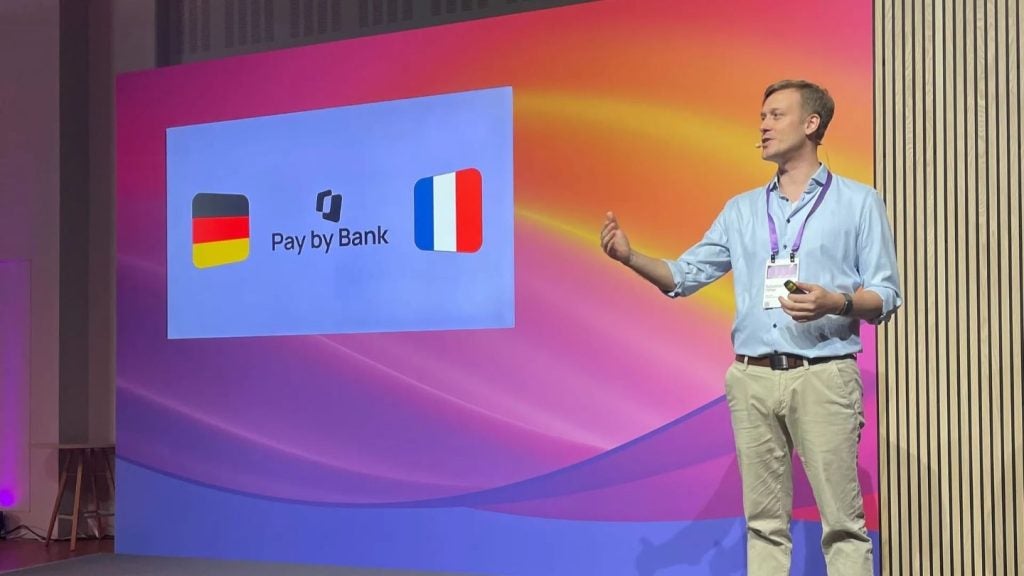VRL recently hosted a round table in
London to discuss possible business opportunities for cards and
payments in the Middle East. Representatives from some of the
leading global payments institutions met to discuss and debate what
is possible in one of the most promising regions for payments in
the world.
The Middle East is starting to be
seen as the ideal location for expansion by those in the payments
sphere.
A multitude of market factors, including the
particularly high ratio of cash transactions as compared to cards
that occur in the area, as well as a recent mandate that means
immigrant workers have to have access to a bank account of sorts,
could mean the market for new payments systems, with prepaid cards
a major focus, is now wide open.
In order to address the opportunities and
challenges that new and current industry players will be facing in
the Middle East, VRL, publisher of Cards International, recently
hosted a round table in London at which representatives from
several leading payments institutions – including Visa, Salans,
Ukash (now Smart Payments), Payment Card Technologies, Travelex,
Zippcard and regional representative Waseela – came together to
break down the key issues both from a specific UK perspective and a
wider, global view.
Middle East prepaid round
table: Participants (in alphabetical
order):

US Tariffs are shifting - will you react or anticipate?
Don’t let policy changes catch you off guard. Stay proactive with real-time data and expert analysis.
By GlobalDataDavid Armstrong, regional director,
Middle East, Travelex Currency Services
Nabil Bader, CEO, Waseela Equity
David Carr, European sales director,
Payment Card Technologies
Robert Courtneidge, international
head of cards and payments, Salans
Sarah Francis, programme manager for
cards, Ukash
Kirsty Haugh, prepaid product
manager, Oberthur Technologies UK
Siobhan Moore, associate, Salans
Jonathan Reynolds, prepaid market
development, Visa CEMEA
David Smith, head of marketing,
Zippcard
The following is an edited version of the
discussion that took place, centred around the challenges and
opportunities in the Middle East.
Jonathan Reynolds, Visa
CEMEA: Some of the challenges for prepaid are very similar
to many of the challenges for electronic cards and electronic
commerce.
It is getting the cards into people’s hands
and getting people to use the cards in a way that benefits the
consumer, the card issuer and obviously us as a payment
company.
Taking those challenges aside, as well as
things like acceptance and understanding of card products,
specifically for prepaid, some of the challenges that we come up
with include the banks working through their business case and
their business model, and really encouraging banks to think a
little differently to their traditional thought process of retail
banking, credit and debit.
I think the key challenge that I have when
speaking to a fair number of banks is getting them to understand
the differences of prepaid as a product and the number of diverse
areas where prepaid can fit, and shift their thinking from their
traditional mindset.
Another challenge in some of the markets in
the Middle East is the landscape of the regulatory environment.
In the United Arab Emirates (UAE), the
ministry of labour’s recent mandate regarding salaries being paid
into bank accounts is an important aspect in generating some
certainty with issuers and stakeholders so that they can do things
and know they are doing them in a correct way, and making sure that
they are actually going to be achieving something while they do
it.
Uncertainty is also an issue. When there are
laws that restrict prepaid you can try to work through them, but
the problem comes when people don’t know what is and isn’t allowed
in prepaid.
I think there are opportunities with the
payroll-type product, with the already-burgeoning remittance market
that moves money from the Middle East to various different
countries.
Banks are looking at working out how they can
leverage their existing database of customers and how they can
potentially cross-sell services with their existing credit and
debit businesses.
I think that’s another opportunity for prepaid
issuers in the market. It’s a matter of tapping into the customers
they have and adding incremental revenue through prepaid
products.
 Robert
Robert
Courtneidge, Salans: The main opportunities are arising
from the new ruling that all the workers need an account into which
they can pay money.
This is a key place to start because of the
sheer number of these workers in the country, perhaps even a few
million, many from Pakistan or India.
There are also opportunities at the other end
of the scale, looking at the very rich and the way in which this
isn’t credit in the normal way and so can be adapted to comply with
Sharia lending.
This is then where you can create prestigious
products at the top end of the market. There is a real need to be
able to move large amounts of money around, and the kudos given to
you in the Middle East for providing different types of cards
offering a wide selection of premium products will be great.
 Siobhan Moore, Salans: From a legal point of
Siobhan Moore, Salans: From a legal point of
view, the key requirement for new entrants is just understanding
the regulatory environment. I think a point Jonathan touched on is
key for a number of reasons.
It is the question of whether you can put a
prepaid card into the same situations in the Middle East as you do
in various countries in Europe and beyond.
For this you have to understand regulatory and
banking environments as well as the cost of banking.
In terms of opportunities, it is also
interesting to examine the traditional cheque or cash market models
which are going on in the Middle East and finding out whether they
could potentially be replaced with a prepaid card because that’s
again a key part of the business model.
The cards have to be of value, they have to
replace something that is more costly or involves more
administration, so there needs to be an incentive for people to
move onto a prepaid card.
 Dave Carr,
Dave Carr,
Payment Card Technologies: In terms of problems, a real
one is that with the large transient or multicultural workforce in
the Middle East, a lot of them have never had cards, so you have to
market and educate them in how to use a card.
For opportunities, the idea of a premium or
concierge card that could offer all the advantages of a concierge
product while complying with local religious credit laws could be a
real opportunity. Also, an internal travel or expenses product for
the local business owners could work very well.
David Armstrong,
Travelex: One of the current challenges facing foreign
businesses in the Middle Eastern region is the issue of exactly
where to focus their efforts in the short-term.
It can be difficult to precisely gauge how big
the potential markets are and exactly what kind of regulatory
framework exists within them.
Bank identification number sponsorship is
another issue. It is important to understand who is looking to
initiate a prepaid card programme. It is very interesting when you
look at current prepaid card programmes in the Middle East to see
who is successful and who is looking to expand on the functionality
of their current products, perhaps looking at other methods of
delivering new income.
An example that perhaps we might look at is
dynamic currency, which would expand a prepaid card programme to
become truly international while generating new revenue from
foreign exchange income.
Sarah Francis,
Ukash: There are two areas to this. A lot has been
mentioned in terms of the money moving out of the country and what
are the opportunities there, and I think the sectors that represent
great opportunities for us are the ones such as airlines and so
on.
But I think that is very much a case of money
moving out of the country, and it is also what the requirements are
within the localised environment.
It is all very well giving workers localised
cards but if they are just taking the money out of ATMs to spend in
a largely a cash environment, where does that leave a prepaid card
with a negative interchange?
So it is understanding where cards fit into a
local environment and where they could be used by so many of the
workers that are in that country, outside of taking out cash from
ATMs.
Kirsty Haugh,
Oberthur: I think it is also about the availability of the
cards.
If you are going to get people signed up and
showing interest in the card you can’t wait for however long it
might be to issue the cards.
It is important to actually place the cards in
people’s hands so they can then start to use them as well as the
services we’re trying to promote in terms of the prepaid space.
Nabil Bader,
Waseela: The opportunity for prepaid is tremendous, even
if the fee structure may be a bit different from how it currently
stands in the US and Europe.
In my opinion, putting prepaid onto a
remittance platform is the true solution. I have heard a lot from
the major banks in the UAE, Kuwait and Saudi Arabia and they are
all driving to put payroll prepaid remittance onto a platform that
fits one for all, including usage at the point of sale (POS).
Another major opportunity is in the millions
of cards that need to be produced, and the more awareness you
create, the better.
It i not that the banks are unaware of
prepaid. A lot of the bankers in the Middle East see the
opportunity present but don’t want to take a chance on the
technology due to the politics of the bank.
Awareness among the population of how to use a
card has actually rapidly increased from around 3 percent in 2003
to around 80 percent or 90 percent today, and a lot of this is due
to various Indian television stations over here, as they have
probably been the biggest marketers.
In terms of acceptance, while many of the
petrol stations and smaller retailers in suburban areas don’t
accept credit cards, they do accept prepaid cards.
For example, in the UAE, since they stopped
accepting credit cards at petrol stations they have put in a
prepaid platform that companies can use.
The largest segment in the Middle East is the
unbanked, at almost 77 percent of the market.
The others are people who understand how you
get a credit card and how to get a prepaid card and how those are
both properly used.
So the largest group of users are not those
that can spend AED40 ($11) at a mall, but those that spend it at
smaller shops, so the acceptance is here if you’re willing to put
the infrastructure in.
David Smith,
Zippcard: The initial problem was that the finance
ministers and the central banks of developing countries recognised
that 80 percent to 90 percent of their people don’t have bank
accounts, so the cash sitting in that part of the economy is not
formal.
Furthermore, there is a huge amount of the
remittance business which is also informal and unaccounted for.
There are two major issues in some of the
places where we currently operate. One is the location of the
banks.
In Uganda, for example, there are 30 million
people and two years ago there were 200 bank branches – now there
are around 378. This means a bank branch for every 75,000 people,
and you can be 60 or 70 miles from your nearest branch.
So far in the Middle East, we have seen
problems with primary acceptance, in terms of who knows about us
and where we would fit into their existing product portfolio.
I see our primary targets as being the banks
that don’t currently have a suitable programme for those who are
outside their existing sphere of influence.
Another big problem we’ve encountered is how
to make something affordable for someone earning less than $10 a
day, perhaps even down to $1. A lot of the work we’ve done so far
is working out what is suitable for this range of earners. Right
now we have a product that can be bought for $5 and operates at
around $0.50 a month as a management fee.
Although it is currently closed-loop, we see
no reason why it could not be open-loop. This leads onto the other
major issue in the area, which is why people should choose cards
over cash.
We’ve found that the delivery of the
infrastructure is an overhead we have to accommodate with our
partners.
The card owner has to be incentivised to use
the card and the merchant should not be restricted or held back, so
what we ask is that instead of charging a merchant discount fee, we
ask the merchant to give the customer a discount of at least one
percent.
That way the merchant gets an incentive for
accepting cards and he gets commission from selling the cards in
the first place. The user gets a discount when using the card and
the bank and technology provider all get a share of the management
fee.
 Jonathan
Jonathan
Reynolds: We will see more gift and prepaid programmes in
the market going forward. I think at the moment banks are focused
on the payroll product because the law has told them to and there
is such a large volume travelling through them.
I think once banks have bedded that in and got
that moving they will start to widen their prepaid base and add
more categories and other segments like gift.
As the market grows and develops in prepaid,
more programme managers and stakeholders will enter the market,
which is probably likely to open up some of these other channels
and other distribution networks.
Sarah Francis: I think you
have two main areas of study for prepaid in the area: where it
affects the local population and the internal need for a cash
replacement with cards and then also the external need to move
money out the country.
Even within the remittance market you have two
distinct areas. How widely does the card work in the country
itself? What happens when the cardholder leaves the country?
It essentially boils down to an internal and
external area usage discussion.
David Carr:
Contactless is also an important subject, as cashless today costs
more to process in a transaction than I’m going to make on the
interchange.
So let’s be realistic about how that
infrastructure is going to work. Is it polling transactions, is it
taken of the chip, how is that technology actually working?
Because I’m not going to go out and sell a
payWave or PayPass cashless prepaid product if I’m not going to
make any money.







